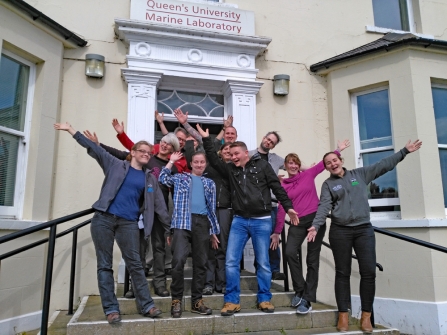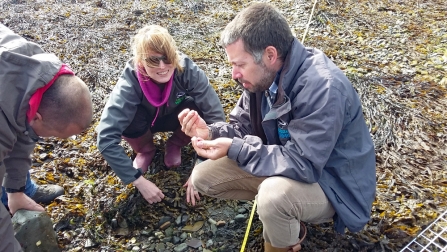Capturing our Coast, also known as CoCoast, is a national marine citizen science project which aims to train and support a network of citizen scientists in measuring the distribution and abundance of rocky shore species nationally. Funded by the Heritage Lottery Fund, the project is centrally coordinated by Newcastle University, and run locally by seven regional hubs. For Northern Ireland, the hub is the Scottish Association for Marine Science (SAMS).
Capturing our Northern Irish Coast

Over the course of the training day, prospective volunteers combined classroom learning and lectures with practical shore surveys. In the classroom, the background of the project was clarified, along with the aims and importance of training up a network of citizen scientists. Volunteers will ultimately choose one of six potential species packs, with each pack containing eight species. The idea is not to get “OK” at surveying as many species as possible, rather to become an expert at surveying the species in your pack!

The practical shore survey was far and away the favourite activity on both days. It was a very encouraging sign to see so many eager citizen scientists chomping at the bit to get outside and survey. Many of those attending wanted to get involved in the project to increase their species identification skills and get to know the flora and fauna of our coasts better. And what diversity we have – even on the seemingly species-scant wave-battered rocks near the Coastal Zone in Portrush we found numerous wracks (Fucus spp.), periwinkles (Littorina spp.), sponges, and mused for quite a while over an unusually coloured beadlet anemone (Actina equina). There is always more to find then you think! The Walter Shore in Portaferry is a beautiful stretch of shoreline, with most exciting finds of the day including the ever popular starfish (Asterias rubens), slippery butterfish (Pholis gunnellus), and many beautiful wracks (can you tell I’m a seaweed fan? Algae always gets a mention).
Thank you to both venues for hosting Ulster Wildlife and volunteers each day; to SAMS for their continued support throughout; and most importantly to all those who attended each training day. Thanks for your enthusiasm and see you out on the shore.
Supported by:


